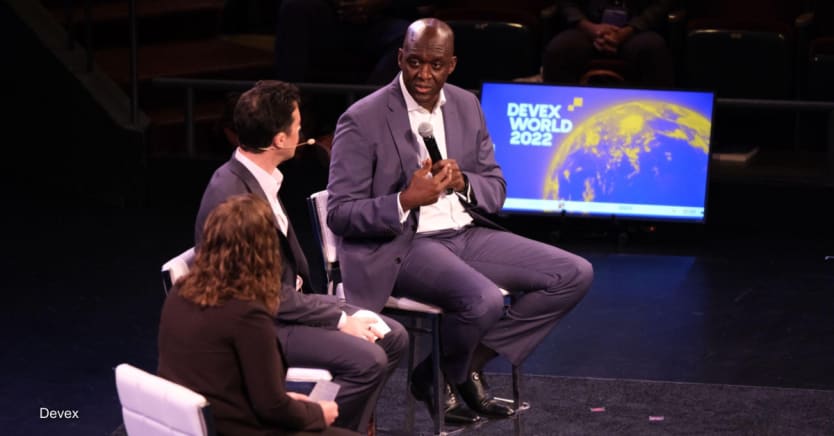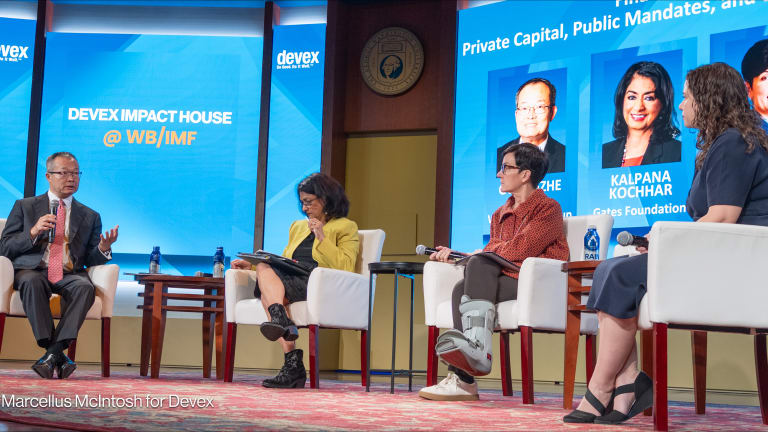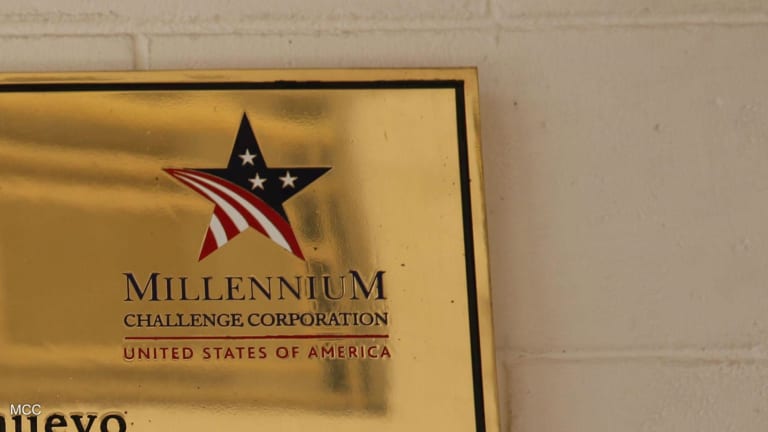
The International Finance Corporation plans to make structural and process changes to “bring decision-making closer to our clients and markets,” according to an email obtained by Devex.
The email, sent by IFC Managing Director Makhtar Diop to staff members last week, revealed upcoming changes — from new titles to different reporting structures and shifts in decision-making — as the institution starts its new fiscal year.
“My hope is that the changes described below will make our organization faster, nimbler and more responsive to our clients’ needs, ultimately enhancing our impact and fulfilling our mission when the world needs us most,” Diop wrote.
One significant change is how the institution will make decisions about new projects.
While IFC has worked to simplify processes over the past year, including easing procedures for repeat clients who previously borrowed, it will now expand those procedures to new projects in an effort to streamline approval. Functionally, this means that most projects will be approved at the regional level, with only the riskiest projects going to IFC’s Corporate Operations Committee.
The leadership structure will change too. Senior director positions, created a few years ago, will be eliminated, and Stephanie von Friedeburg’s role as senior vice president of operations will not be refilled when she steps down after nearly three decades with the World Bank Group. Von Friedeburg, who also served as IFC’s interim managing director prior to Diop’s appointment, plans to retire in September, but her final day in the office was Friday, according to a separate email that Diop sent to IFC staffers.
IFC will create a new Vice Presidency Unit for Industries, which will be led by Mohamed Gouled, previously vice president for risk and finance. All global industry directors, as well as corporate portfolio and operations management directors, will be part of that unit.
IFC hits lending goals; Diop plans more ‘aggressive’ targets next year
IFC invested nearly $33 billion in its latest fiscal year, topping the previous annual figure and hitting its climate target. Managing Director Makhtar Diop discusses the past year's results and what's next.
IFC will also combine its debt and equity mobilization work into one unit: renaming the Treasury and Syndications Vice Presidency as the Treasury and Mobilization Vice Presidency, led by current VP and Treasurer John Gandolfo. That change will go into effect Aug. 1.
The new structure will have 11 vice presidents, with all of them reporting to Diop.
IFC is also creating two new regional director positions: one for Africa, which will be based in Lagos, Nigeria; and one for Latin America and the Caribbean, based in São Paulo, Brazil.
IFC’s upstream work, which is a key part of the “IFC 3.0” strategy, will also see some changes.
“Over the last three years, we have made huge strides in establishing and scaling up our Upstream capacity and building the pipeline. We are now refining our operating model to further strengthen focus on execution and conversion of pipeline, with a simplified and integrated structure and increased regional capacity,” Diop wrote in the first email.
What that means is that IFC will be “putting more upstream resources into the field” and speed up incorporation of its upstream and advisory work. It will also streamline decision-making, including combining advisory and upstream teams at the regional level. At headquarters, upstream work will be led by sector managers, with upstream staffers moving to sector units and regional teams. All the upstream changes will be made by the end of the calendar year, Diop wrote.









